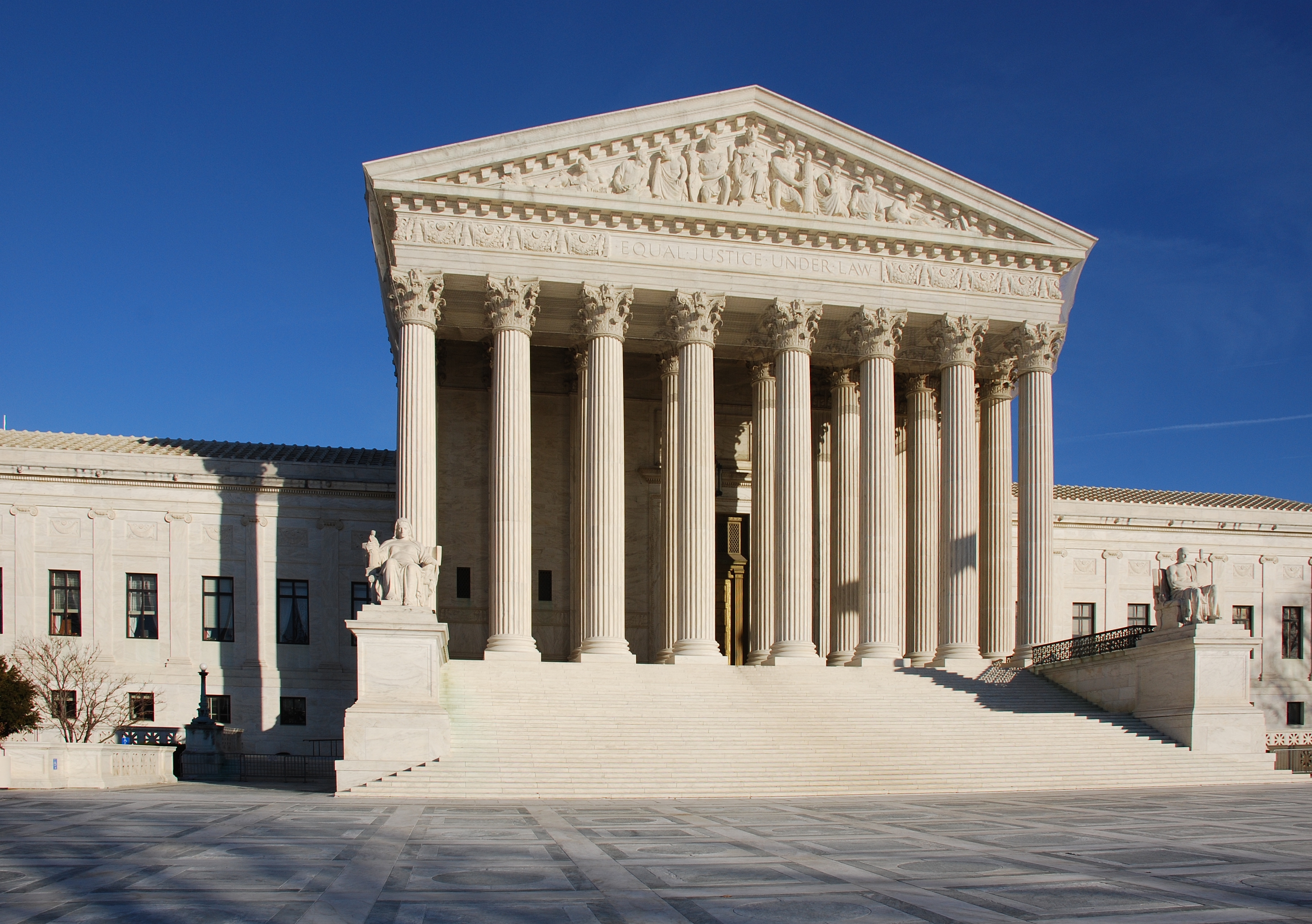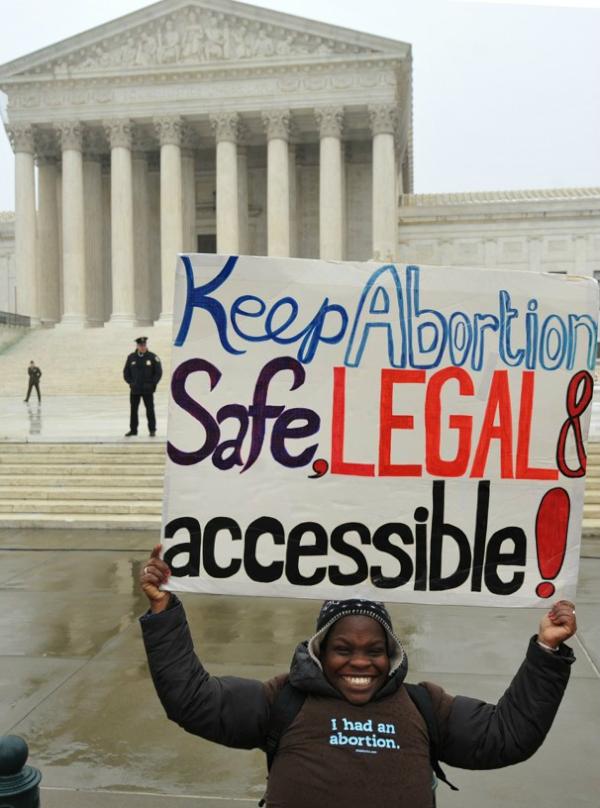Whole Woman’s Health v. Hellerstedt has the potential to ensure a woman’s right to choose — or give abortion opponents more power than ever.
 It’s not news that abortion rights are under attack in America. Although seven in 10 Americans support a woman’s right to choose, anti-abortion legislators, lobbyists and extremists will stop at nothing — not a shooting spree, not a multi-year conspiracy to spread lies about abortion care providers — in their ruthless campaign to end access to safe, legal abortion.
It’s not news that abortion rights are under attack in America. Although seven in 10 Americans support a woman’s right to choose, anti-abortion legislators, lobbyists and extremists will stop at nothing — not a shooting spree, not a multi-year conspiracy to spread lies about abortion care providers — in their ruthless campaign to end access to safe, legal abortion.
This, despite the fact that in 1973 the U.S. Supreme Court’s decision in Roe v. Wade held that women have the right to terminate a pregnancy. Even though states can impose regulations and restrictions, they can’t pose an undue burden on women seeking an abortion, affirmed by the Supreme Court ruling in Planned Parenthood v. Casey.
But 43 years after Roe v. Wade, that’s not stopping anti-abortion activists from trying every trick in the book to make it impossible for American women to get a safe, legal abortion.
One of the most insidious attempts to limit or end abortion access is known as TRAP laws: Targeted Regulation of Abortion Providers (TRAP). Usually brought forth by legislators as laws and regulations designed to protect women, they do nothing of the kind. They do not make abortion care safer — abortions are already a very safe procedure when performed by a trained professional. They do not protect women against coercion or pressure to have an abortion, something abortion providers already do as part of providing quality healthcare. TRAP laws simply put up roadblocks that make it harder for abortion care providers to stay open.
And that’s exactly what TRAP laws are designed to do: put abortion providers out of business.
TRAP laws are at the heart of a case going before the U.S. Supreme Court in March, Whole Woman’s Health v. Hellerstedt (formerly Cole). Here’s how the Center for Reproductive Rights — which is representing medical caregivers in their efforts to ensure women’s access to safe and legal abortion care — describes what’s at stake in this case:
In an attempt to sneak around the Constitution and four decades of Supreme Court precedent, anti-choice politicians in Texas passed a law known as HB2 in 2013. Under the pretext of protecting women’s health and safety, HB2 buries clinics under medically unnecessary regulations so burdensome as to make it vastly more difficult, if not impossible, to obtain safe and legal abortion care.Should politicians in Texas succeed in their underhanded efforts, HB2 would leave at most 10 providers in all of Texas — the second most populated state in the country — forcing women to travel hundreds of miles or turn to drastic or illegal options.
We’re already seeing an increase in unsafe “DIY” abortions in Texas (and elsewhere in the U.S.) because of laws like these, and the Supreme Court’s ruling in Whole Woman’s Health v. Cole could have far-reaching ramifications for women across the country.
I spoke with policy experts from NARAL Pro-Choice America, who provided valuable insights into the threat TRAP laws place on women’s access to safe, legal abortion care.
“In the last five years, there’s been a real uptick in the number of states that have one or more of these laws on the books,” says Leslie McGorman, deputy policy director for NARAL.
Right now, 44 states and the District of Columbia have some type of restriction on the books that limit or restrict abortion providers — but don’t apply to other types of medical providers. Since the beginning of 2011, at least 288 abortion restrictions have been enacted at the state level nationwide.
At issue in the case before SCOTUS are two restrictions that have the greatest potential to put clinics — and, therefore, the health of women — at risk. HB2 requires doctors who provide abortion services to obtain admitting privileges at local hospitals no farther than 30 miles away from the clinic, and every healthcare facility offering abortion care must meet building specifications for ambulatory surgical centers (ASCs).
Donna Crane, vice president for policy at NARAL, underscores the potential harm these restrictions can cause.
In the beginning, TRAP restrictions primarily had the effect of putting the procedure a bit more out of reach for some women and causing them a lot of indignity and hassle. But these ASC and admitting privilege restrictions can actually close clinics and close doctors’ doors, so they’re much more consequential for women.These laws have gone beyond the point of making it more difficult for women. They’re at the point of having the binary effect of dictating if there is actually a provider within several hundred miles of you or not.
Across the country, anti-choice legislators have found ways to run clinics out of business for reasons that have nothing to do with the quality of abortion care they provide.
 In Virginia and Utah, for example, there are specifications dictating the type of fabric used on window coverings. In South Carolina, abortion clinics are subject to more than 30 pages — including more than 40 sub-sections — of regulations regarding administration, physical plant specifications and more. Clinics in North Carolina must provide a “nourishment station” and Kansas requires clinics to have janitorial closets of 50 square feet per procedure room.
In Virginia and Utah, for example, there are specifications dictating the type of fabric used on window coverings. In South Carolina, abortion clinics are subject to more than 30 pages — including more than 40 sub-sections — of regulations regarding administration, physical plant specifications and more. Clinics in North Carolina must provide a “nourishment station” and Kansas requires clinics to have janitorial closets of 50 square feet per procedure room.
None of these restrictions have anything to do with patient care.
“It’s subterfuge,” says Mac D’Alessandro, SCOTUS and Beyond project director at NARAL. “It’s not about having enough janitorial space to keep the facilities clean. In fact, what that requirement does is make it impossible for some of these places to remain open and accessible.”
What’s more, the restrictions seem to be designed to take down clinics one by one, Crane says.
It’s almost as if they customize them by state, by the region, by the clinic itself. Imposing a number of parking spots, for instance, if the clinic they’re looking to close is in a particularly urban area that has restricted space. Even as an informed citizen, you might not make the connection, so the subterfuge and the sort of creativity and energy put into this is really astounding. Especially when it’s being done under the banner of women’s health, because we all know what happens to women’s health when abortion is illegal. Women are maimed, women are rendered infertile, women die.
The stakes couldn’t be higher in Whole Woman’s Health v. Hellerstedt. A ruling in favor of abortion providers could put an end to TRAP laws once and for all. As for a ruling that goes the other way, with the potential to unleash a flurry of even more restrictive TRAP laws across the country?
“The idea that women are not going to have access to legal abortion again in this country as we did once, it’s unthinkable to us, so we’re going to do everything on our watch to make sure it doesn’t happen,” Crane says. “It’s certainly unthinkable to the American public, which may not even be aware this is happening around them. Because they’re going about their day and assuming that this issue has been settled as normal people would assume.”
As an advocate for choice, NARAL makes it easy for you to raise your voice in support of abortion providers and reproductive rights. Check out their website for resources to do just that.
Read part two in this two-part series: An inside look at abortion restrictions in Michigan.
[Image credits: Top: Jarek Tuszynski via Wikimedia Commons; bottom: Debra Sweet via Flickr.]



